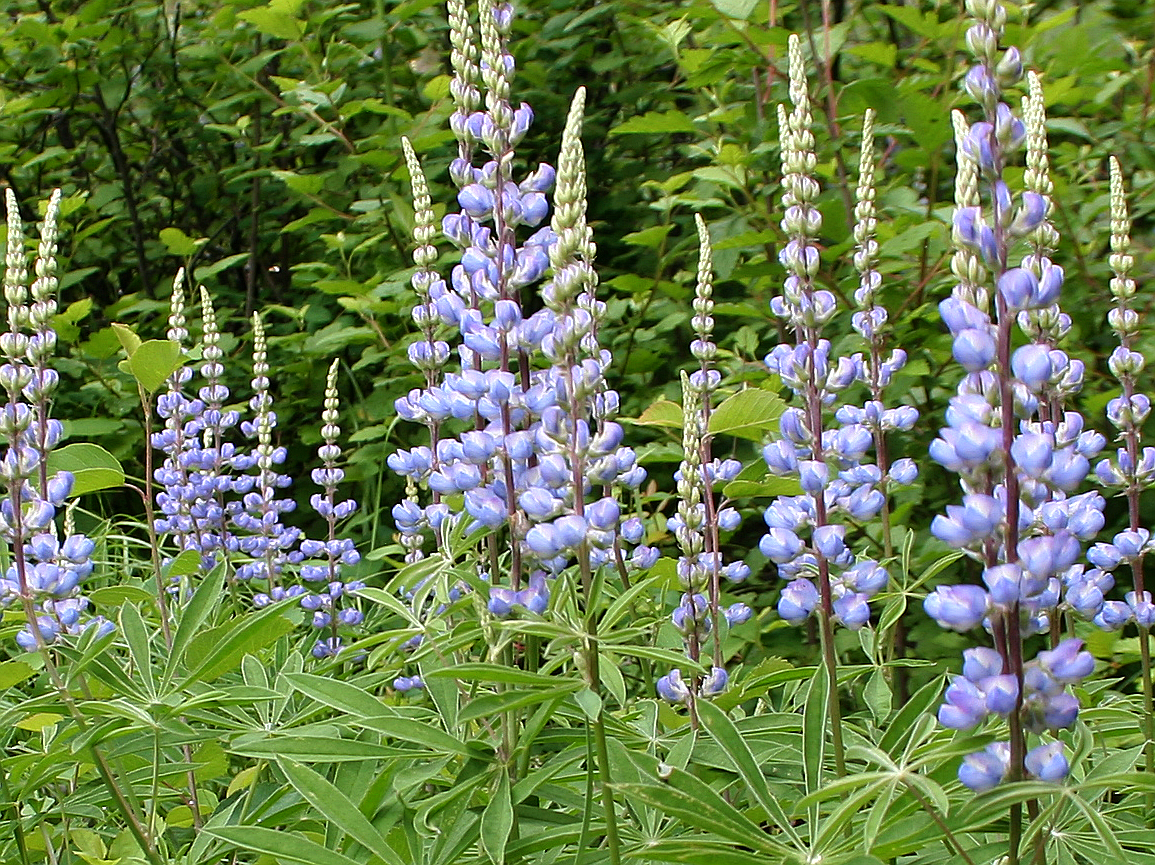Plant Notes: Silver Lupine
Carpeting sub-alpine slopes and meadows in western North America, Silver Lupine (Lupinus argenteus), presents a stunning display of lavender/blue in spring and early summer. A member of the pea family, Lupine flowers bloom on spikes rising 8-24 inches above bright green leaves, which are presented in rosettes of 5-9 narrow leaflets branching off the main stem. Flowers are usually purple to light blue and vary in intensity based on soil composition, light and moisture. The characteristic “banner” at the top of the sweet pea-like flower is white at the center, giving the silvery impression to the overall color.
Soil-wise, Lupine is pretty easy to please. It prefers gravelly textured, relatively dry to moderately moist soils in mostly sunny locations, though it adapts to partial shade nicely. A hardy perennial, Lupine spreads by seeds and is easily controlled in garden settings by removing seedpods. Deep roots make Lupine difficult to transplant.
Easy-to-grow Lupine is often included in mixed wildflower seed packets, both for its beauty as a garden flower and its ability to attract pollinators, including bees, hover flies, hummingbirds and butterflies. First generation worker bumblebees harvest the bright red-orange Lupine pollen.
As with other members of the pea family, Lupine is an important nitrogen-fixing plant, valuable in reclamation projects. A beneficial bacteria can “infect” the roots forming nodules. The bacteria converts atmospheric nitrogen to nitrogen fertilizer which the plant can use. The plant supplies a sugar food source to the bacteria. This symbiotic relationship allows Lupine to enrich depleted soils making them suitable for additional species.
Lupine seedpods and seeds contain alkaloids that (even after drying) can be toxic to humans and animals if ingested in sufficient quantity. One benefit for the home gardener, this toxicity means that Lupine is seldom attractive to wildlife as a forage plant. Silver Lupine is a beautiful addition to the home garden, but maybe not if your garden borders your neighbor's pastureland.
Native Plant Notes are created by the Kinnikinnick Native Plant Society. To learn more about KNPS and the North Idaho Native Plant Arboretum, visit www.nativeplantsociety.org.

